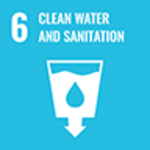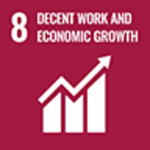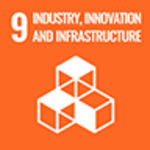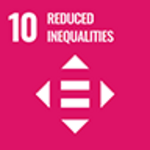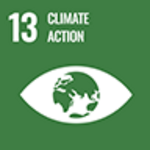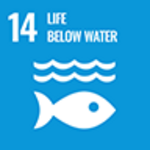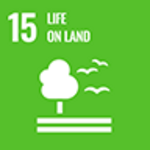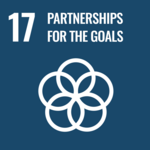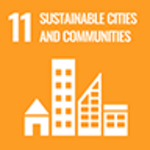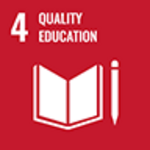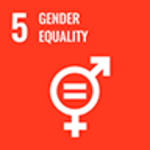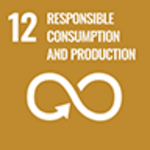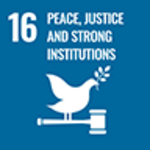
Takahashi: Space development is now entering a new era. We are confident that the microsatellites we are developing will have an enormous impact in helping solve various global issues.

Professor Yukihiro Takahashi
Professor Yukihiro Takahashi is a key person in space development projects using microsatellites currently underway in Asian countries. A microsatellite weighing only 50 kg jointly developed by Hokkaido University and Tohoku University is being used to build next-generation disaster prevention observation systems and agricultural pest diagnosis technology. We will bring you stories from the forefront of "usable space development" that touch on the future vision of Hokkaido as a new base for space development.
A new era of space development has arrived, thinking about "what can be done using space"
First of all, could you please explain what the microsatellites that Professor Takahashi and his colleagues are developing are?
Takahashi: What we are doing is aiming to solve global issues using remote sensing. Specifically, we would like to improve its accuracy so that we can contribute to disaster prevention, environmental issues, and the agriculture, forestry, and fisheries industries. Another goal is to reduce development costs. We are pursuing methods of space exploration that can reach developing countries.
The main role will be microsatellites (hereinafter referred to as "artificial"). While ordinary small and large satellites weigh from 300 kg to several tons or more, and the development cost is usually over several tens of billions of yen, our microsatellite is extremely small, weighing just 50 kg. The development cost was 500 million yen including launch costs, one-hundredth of the previous price.
The work on the ground after a microsatellite is launched is similar to operating a computer, and can be handled relatively easily if the operator has a certain amount of training. This is another advantage that traditional satellites do not have.


Takahashi: Up until now, everyone has heard about space development, which has been about putting national prestige on the line and showing off its technological and economic power, and the focus has been on the very act of going to space. We have already entered the next era, the era of solution business where we think about ``what can space be used for?''
Like Apple founder Steve Jobs, he uses technology to innovate to address the potential needs of the world. Unfortunately, while the world is competing with each other for new uses of space, Japan feels like it has fallen a little behind. We believe that this is our strength.
Enables more accurate observation when you want to see in the direction you want to see
Does this mean that Asian countries, including the Philippines, which actually operate two microsatellites, have a latent need for ``what can be done using space?''
Takahashi: There are tons of needs. For example, microsatellites are needed from the perspective of ESG investment (investing in companies that are considerate of the environment, society, and governance), which is said to be the economic version of the SDGs. .
Owners of large-scale farms and plantations around the world map the distribution of tree species every year to show investors that they are not illegally logging or overexploiting, and that they are mindful of the SDGs. There is a growing demand for forest measurements to be taken into account. This market is currently attracting a lot of attention as a remote sensing business that generates a huge amount of nearly 15 trillion yen every year.
In recent years, sea surface temperatures have risen due to global warming, and it is predicted that the number of extremely powerful typhoons will increase in the future. Developing countries are vulnerable to disasters, and a single typhoon in Bangladesh and Myanmar kills more than 100,000 people.
If a typhoon of this magnitude had been predicted at an early stage, the countermeasures would have been different. Naturally, weather forecasting for such natural disasters is required in Japan as well, and more accurate and immediate observation using microsatellites is a common issue in Asia.
However, many satellites, such as Landsat, an artificial satellite launched by NASA, observe a specific location at a slow pace of once every 16 days. Moreover, the only area that can be observed is directly below the satellite. This is where microsatellites come into play.
The most outstanding feature of the microsatellite we have developed is "target pointing," which allows you to point the camera in the direction you want to see when you want to see it. Since it pinpoints only the requested areas, it can minimize the amount of data, and it also has great business benefits as it allows you to sell the collected data without wasting it.
This target pointing function expands the observation range 20 times that of conventional satellites, and considering that the development cost is 1/100th, the cost performance is 2000 times. The speed of technological development is also exceptionally fast, and innovations that were previously unimaginable are progressing steadily.


Speaking of remote sensing, it has begun to be used in smart agriculture, such as by flying drones into fields to understand the growth status of crops, but have any current issues been identified?
Takahashi: To put it a bit harshly, there are limits to how far current smart agriculture technology can become a remote sensor that is truly useful in agriculture. Specifically, the spectral (color) information that reflects field information read by drones is too coarse, so even if you fly a drone, you still don't know the correct situation.
Our microsatellite overcomes this by being equipped with an ultra-multi-wavelength spectral sensor equipped with a liquid crystal variable wavelength filter camera that instantly selects the appropriate band (wavelength band).

Takahashi: What is important at this time is to collect a large amount of ground-based data that can be compared with observational data from space. We have developed a compact spectrometer that looks like a thickened smartphone, and by mounting it on a drone or performing handheld measurements, we are creating color-coded data for each plant species, which we call a ``spectral library.''
This spectrometer is also much cheaper than conventional equipment. We have obtained a patent and have collected more than 200,000 pieces of data using approximately 100 units.

Providing solutions and realizing space development without disparities by everyone
It seems that a wonderful model case has been created in which an international student from the Philippines studied under Professor Takahashi and his colleagues, established a technology to detect diseases with high precision in a vast banana plantation, and then returned to his home country and played an active role.
Takahashi: There are other companies around the world who are developing microsatellites, but the reason why Hokkaido University has gained tremendous trust from countries in Southeast Asia, including the Philippines, is because of the challenges faced when using satellites in your country. Because we always provide solutions that say, ``I can contribute to the solution.''
At the root of this lies a desire to build a lasting partnership that goes beyond simply buying and selling technology, and says, ``Let's work together to create a new order of space exploration.'' I feel that people who sympathize with this are choosing us.
In addition, I believe that Hokkaido University, a comprehensive university, is able to make multifaceted proposals from the perspective of data users by using its wide network of researchers, and that our track record as an educational institution is another factor that earns our trust. .
What is the ``new order of space development'' that Professor Takahashi and his colleagues envision?
Takahashi: In more familiar terms, it is the ``Asia Microsatellite Consortium,'' which Hokkaido University is calling on to nine Asian countries, and beyond that, the ``construction of a microsatellite platform involving 100 countries.'' We want to eliminate the gap between Japan and major powers and create a world where international cooperation, including developing countries, is possible.
In the future, in response to a request from a fisherman, such as ``I want to know the arrival time of red tide,'' the nearest satellite will send the analysis results of observation data to the user's smartphone via a server. "System" may no longer be a dream.
Hokkaido, which boasts the best field in Japan, is the perfect place to base such a grand plan. Currently, ``Creating an innovative remote sensing business using Hokkaido University's spectral measurement technology'' has been selected for the Ministry of Education, Culture, Sports, Science and Technology's ``Regional Innovation Ecosystem Formation Program.''
Eventually, we would like to make Hokkaido University a base for satellite development and education, and to realize the ``Hokkaido Regional Space Center Concept,'' which would create Asia's first spaceport in Taiki Town.

From what we have talked about so far and the diagram below that Professor Takahashi showed us, we can see that the problem solving brought about by microsatellites can cover a wide range of SDGs goals. Lastly, what are your expectations for high school students now, Mr. Takahashi?

Takahashi: Turning your attention to the world. While it is important to pay attention to trends in developed countries such as Europe and the United States, I would like you to also pay attention to developing countries, which are potential future partners.
Currently, Japan is still in a position to support developing countries with the technological and economic power it has cultivated during the past era of high economic growth, but it would not be surprising if this position were reversed in a few decades. .
Every country in the world is doing their best. It is very important to be aware of this and to start cultivating a partnership of equals, rather than just looking down on them. There is much to learn from every country.

In front of a thermal vacuum chamber. (Thermal vacuum chamber: Reproduces the vacuum in the satellite orbit and the temperature changes between day and night to confirm the normal operation of the satellite and onboard equipment.)

Yukihiro Takahashi Professor
Affiliation: Hokkaido University Graduate School Faculty of Science Earth and Planetary Science Department of Space and Planetary Science
Director, Space Mission Center, Creation Research Organization, Hokkaido University
When he was in the third grade of elementary school, he decided to become an astronomer, but he changed his mind a bit and studied geophysics in graduate school. Starting with research on aurora and outer space, his interest has expanded from lightning discharges and planetary exploration to satellite usage, and now he devotes his time to measuring agricultural products.


















